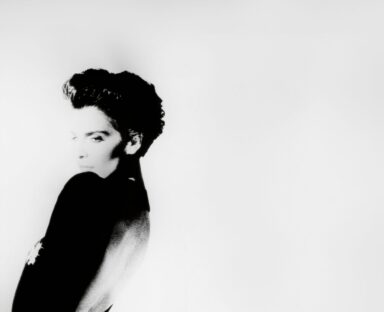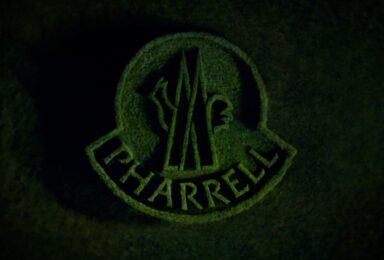Watch our video interview with Charles Fréger: his solo exhibition “Fabula” – collecting many series of ethnographic, theatrical and colorful portraits of communities around the world – has been inaugurated at Armani/Silos during Milan Fashion Week
Interview by: Fiammetta Cesana
Video and photos by: Carmelo Farini
Music provided by: Mauro Trio @conklin.maurotrio
Within the fashion art museum of Armani/Silos in Milan, curious and charming creatures animate with their bright colors the gray austere walls. These are the characters of “Fabula”, a retrospective of the French artist and photographer Charles Fréger.
The exhibition – consisting of a photographic corpus of about 250 works created between 1999 and 2018 – tells the story of both small and large human communities, synthesizing an anthropological, but above all artistic, research in constant evolution. From young Sumo wrestlers, to tiny swimmers and kingsguards, Sikh, till ritual dances and masks, Freger’s lenses have captured the most diverse subjects, gradually writing the chapters of a consistently changing story, that of humanity.
On the occasion of the exhibition’s inaugural cocktail, the enthusiastic artist told us about the enormous work and study that is hidden behind every single shot, sharing with us the evolutionary parabola of his personal approach to photography. Adopting a poetic and dreamlike language, aimed at thoroughly investigating the very concept of belonging to a community, Fréger stages the representation of an exotic and fascinating realism, with its clichés and stereotypes, without, however, the presumption of unveiling its most intimate and inaccessible secrets.
Have a read to the full interview…
Fiammetta: Reading about your works, terms like “social body”, “identity”, “community”, “code”, “exoticism”… immediately come up. How do you actually combine these kinds of element into your both ethnographic and artistic research?
Charles: It’s quite instinctive… When I start all these projects I have a sort of list of poetic elements I want to photograph, and from that each project goes further and further. I have some issues I am interested in and exploring one population I can find my answers, but then new questions pop up. So once I discover one community I jump to another one, creating an evolution of my projects. In this way I can also see the correspondences between one community and the other.
F: You have indeed such a wide-spanning body of work. You moved from the Water Polo swimmers series to the Mardi Grans Indians one…
C: Between these two series there are almost 14 years, so they probably reflect two different mindset of mine. At the beginning of my work I was 24, 25, I was still questioning what it means growing up and becoming an adult in the context of a community. And I think step by step I got out of the subject of being a teenager in a community and I started to question about communities which are more theatrical. So I would say that my work became less social documentary and more into the complexity of materials and of the way people dress through the accumulation of layers, as each layer has a particular story.
F: Last year we featured an article about MoMA’s exhibition of the Indian photographer Gauri Gill, who did a series of portraits in a very poor and rural district in Maharashtra, making her characters wearing papier-mâché masks while acting in their daily life. These masks were made by the individuals themselves who usually wear them during religious celebrations as they represent Hindu gods. So the photographer create a sense of spirituality and a dreamlike rural scenario, as you do somehow. How do you think there is a relationship between the mask and the sense of belonging to a community?
C: The mask is a layer in between someone and someone else. There is the inside of the mask and the outside of the mask. When a masked is used it always makes someone believe that you have a different identity so you can change your identity with the mask or you can act like someone else. So you find masks in every culture it is a way to jump over your own identity. Identity is not stable, we are not only one person, we constantly change. And we are made of a lot of collective identities. We are social member of a community, we are made of people around us, we build ourselves by our family, our friends. And the mask is a moment in which you can twist it. There is no standard in the way you change yourself as a bear in a European masquerade, and you may transform yourself completely, you may believe you are a bear. I wouldn’t call it a “trans” but there is a certain moment that people may really believe they are a bear. In some other cultures, the mask is more theatrical, and more like a play, where you stay as yourself but where you show you are able to act as someone else.
F: Your recent works seem to have a strong focus on the dress code. The dress itself, throughout your photographs, seems to have a soul, a truly power… In what way do you think clothes reveal something individual’s identity?
C: You know, I am not into clothes directly, as I am not an ethnographer and neither a clothes’ specialist. I am pretty selective in my subject. I like to photograph groups which I call “traditional”, “old school”, because I believe they have a history, a background, and every sign they wear is part of a culture and a tradition. So the way someone dress up to go on the street is very different to the way someone dress up because is taking part of a masquerade, or a ritual, or a protocol. So I am more convinced by this and by the streetwear. I am not interested into alternative culture neither. You won’t see throughout my work series of punk, gothic culture, it’s not my stuff. I am really much into some groups which have being exiting for a long time and which keep exiting with all the changes and evolution.
F: Do you have some books that inspired you?
C: There is a series of books that I read few years ago. It’s a series of book form the 1870s, one of the first visual collections of how people dress up in the world in the 19th century but also in the past. The 19th century really inspired me. It was the colonial time, which is a pity, but there was a moment in which some bourgeois, some elite, use photography, which was just invented, to represent the world. So all these works has an impact on the image we have about humanity, still now. And we all received all these stereotypes as kids, like you and everybody around us.
F: So did it happen to you when you travel and study a place and its community to break some of these stereotypes and cliches?
C: Well, I don’t try to break the stereotypes, because the position of just photographing a community, while twisting the stereotypes, it would become a concept, a system. So I take it as it is. I also believe that communities of the 21st century are also reusing stereotypes which are produced by their own community. If you look at the “Blue Heaven” video at the exhibition, you see six Tahitian dancers, but the move and the way they dress up is already exotic for themselves. You look at the video and it is exotic to you it is already exotic for them. What they do is already a representation of something which disappeared. So it’s already a superficial representation for them as well. More and more now people are reproducing the imagery of what it was before. And it doesn’t really matter if it is a stereotype or not, because the main point is why people are dressing up in a certain way. It’s not to be the pure representation of the culture, it doesn’t matter if it is accurate or not. What is accurate is that these people are still a community.
F: Talking about your ongoing exhibition, how was your experience with the Armani maison? How your works relate with this kind of context?
C: To me Armani Silos is an architecture, which is particular, so when you have to make a solo here you need to build a show which fits into that space. And this was the challenge with this show. We used the space like looking at the chapters of a book, and I think we succeeded with that. And of course the fact that it is in the context of Armani gives a certain spirit to it, so there is a link between my photographic work which is a global documentary and the work of Mr. Armani which is also a reflection of how to dress up in the 20th and 21st century.
F: Our next issue will be about icons. So which are your fashion or artistic icons, the ones you take inspiration from?
C: There are two ways to deal with icons. One is the most religious one where suddenly something goes at the center of an image, and where you think of an icon as the way to build an image. Or you make something iconic, like Andy Warhol did, by taking a Brillo box and then accumulating these boxes almost like a religious representation. In my work the iconic aspect is really important. For example I do portrait with a very particular standard, there is a protocol, proportions. I would for sure separate icons and celebrities. Instead of choosing a celebrity and using it as an icon is a fashion project, I think it is more powerful to take someone who has anything but an icon and make it an icon.
“Fabula”
Armani/Silos, Milan
January 12 to March 24


